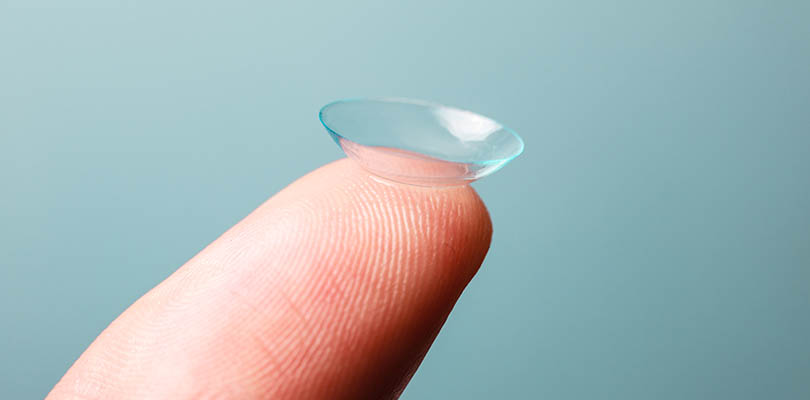Contacts for Astigmatism
After a thorough eye examination, your eye doctor has confirmed your fears – you have astigmatism.
You might be questioning – can I wear contact lenses with astigmatism? Can they correct or prevent this condition from worsening? What are the best types of contact lenses for astigmatism?
Fortunately, this article will help to answer some of these lingering questions that you may have about your astigmatism.
What are Contacts for Astigmatism?
Quite often, people with astigmatism erroneously believe contact lenses aren’t a viable solution for their condition. The fact is, vision correction technology has undergone a rapid evolution over the years, and contacts have experienced some evolution as well. Today, there is a wide array of exceptional options for correcting or managing astigmatism with contacts.
Contacts for astigmatism are small prescription lenses that sit precisely on the eye. They are specially designed to resolve astigmatism and are customized to fit comfortably in the patient’s eyes. For instance, regular contacts have a spherical surface, while contacts for astigmatism have a more rectangular shape to fit in the astigmatic eye perfectly.
Why Should You Wear Contacts for Astigmatism?
Contacts for astigmatism float on the tear film layer of the corneal surface. Their job is to rectify refractive errors.
These lenses work like traditional glasses, but since they are placed directly on the eye, their movements are identical to those of the eyes. In other words, contacts for astigmatism function by changing light ray direction to ensure correct focus onto the retina, resulting in flawless vision.
Are Contact Lenses Better than Glasses for Astigmatism?
Your decision to wear contact lenses or glasses for astigmatism should be decided based on personal preference. Other factors worth putting into consideration include comfort level, budget, convenience, aesthetics, and lifestyle. But there are many benefits associated with contacts for astigmatism that make them popular and highly sought-after among people with astigmatism. These benefits include:
- Super easy to wear: Contact lenses are extremely easy to wear compared to glasses that can, at times, be heavy (based on the weight of the frame you select).
- Contain high water content: Most contact lenses used in vision correction are made of water, which keeps your eyes continuously moistened. This saves you from the common dryness problem associated with eyeglasses.
- Broad color options: Contact lenses are available in a wide array of colors, allowing you to give your eyes an attractive appearance while fixing your astigmatism.
- Clearer vision: Contact lenses don’t block vision, especially peripheral vision, because they sit directly on the eye.
What Types of Contact Lenses are Ideal for Astigmatism?
There are many different types of contact lenses for astigmatism. Some options include toric contact lenses, rapid gas permeable contact lenses, and hybrid contact lenses.
Toric Contact Lenses for Astigmatism
Toric lenses are creatively made soft contact lenses that rectify astigmatism. They resemble normal soft contacts but have varying powers at varying meridians. The unique design allows them to rotate with your eyes automatically. Also, toric lenses are extremely permeable and are built with silicone hydrogel or hydrogel.
Toric contact lenses ensure your eyes are breathing properly by allowing an adequate amount of oxygen to pass through them effortlessly. This feature makes these lenses quite comfortable to put on for many hours.
They come in many wearing schedules, from monthly, weekly, and even daily disposables to long-term wear.
However, there are a couple of drawbacks to these lenses – they may need a couple of visits to the eye specialist to identify the perfect strength and fit. Also, they are a bit expensive, with replacements being quite costly.
PTSD is a mental health condition triggered by either experiencing trauma firsthand or witnessing or learning of a terrifying event that happens to others.
Rapid Gas Permeable Contact Lenses
Also known as GP or RPG lenses, rapid gas permeable lenses are an effective solution for astigmatism.
They feature some silicone, making them more flexible compared to hard lenses. They allow a sufficient amount of oxygen to pass through them, allowing the eyes to breathe. Although not as flexible as regular soft contact lenses, they are more innovative compared to the hard contact lenses of the 1970s that were built with PMMA plastic. They are also more resilient than soft contact lenses, making them more cost-effective in the end.
Most eye doctors prescribe RPGs to people with moderate astigmatism. However, in cases of severe astigmatism, they may recommend toric lenses.
Many people report improved vision clarity with RPG contact lenses compared to soft toric ones. But they are not as comfortable as soft toric lenses. Extra custom fittings may address this problem.
Hybrid Contact Lenses
Hybrid contact lenses are the ideal treatment option for some people with astigmatism. These lenses feature a central area built with an RPG material, enclosed by a silicone hydrogel or hydrogel material.
Hybrid lenses incorporate the best qualities from the two kinds of contact lenses for astigmatism – the clear vision of RPG lenses and wearing ease that is akin to that of toric soft lenses.
They are ideal for sporting activities, as their design allows them to fit in the eyes with little to no risk of dislodging from the eyes.
Can You Wear Usual Contact Lenses If You Have Astigmatism?
The astigmatic cornea has both a flatter curve and a steeper one, which causes light rays to target two points in the retina, instead of only one. Regular, circular contact lenses have matching prescription power throughout the lens. But if you are astigmatic, you require an extra prescription power to successfully direct light rays to one point. This second section of the prescription is known as the “cylinder” lens power.
If your cylinder is extremely low, you might be able to keep wearing regular contact lenses. But if you have a major visual compromise, regular contact lenses may cause blurriness. What’s more, regular lenses aren’t as stable as contacts for astigmatism. As a result, they tend to rotate around the eye, causing distress to the nerve as well as ocular muscles.
Conclusion
If you have astigmatism and want to wear contact lenses to rectify your eye condition, schedule an appointment with your eye doctor. During a detailed eye assessment and contact lens session, your doctor can offer you expert advice on the best astigmatism-rectifying contact lenses for your unique needs.







